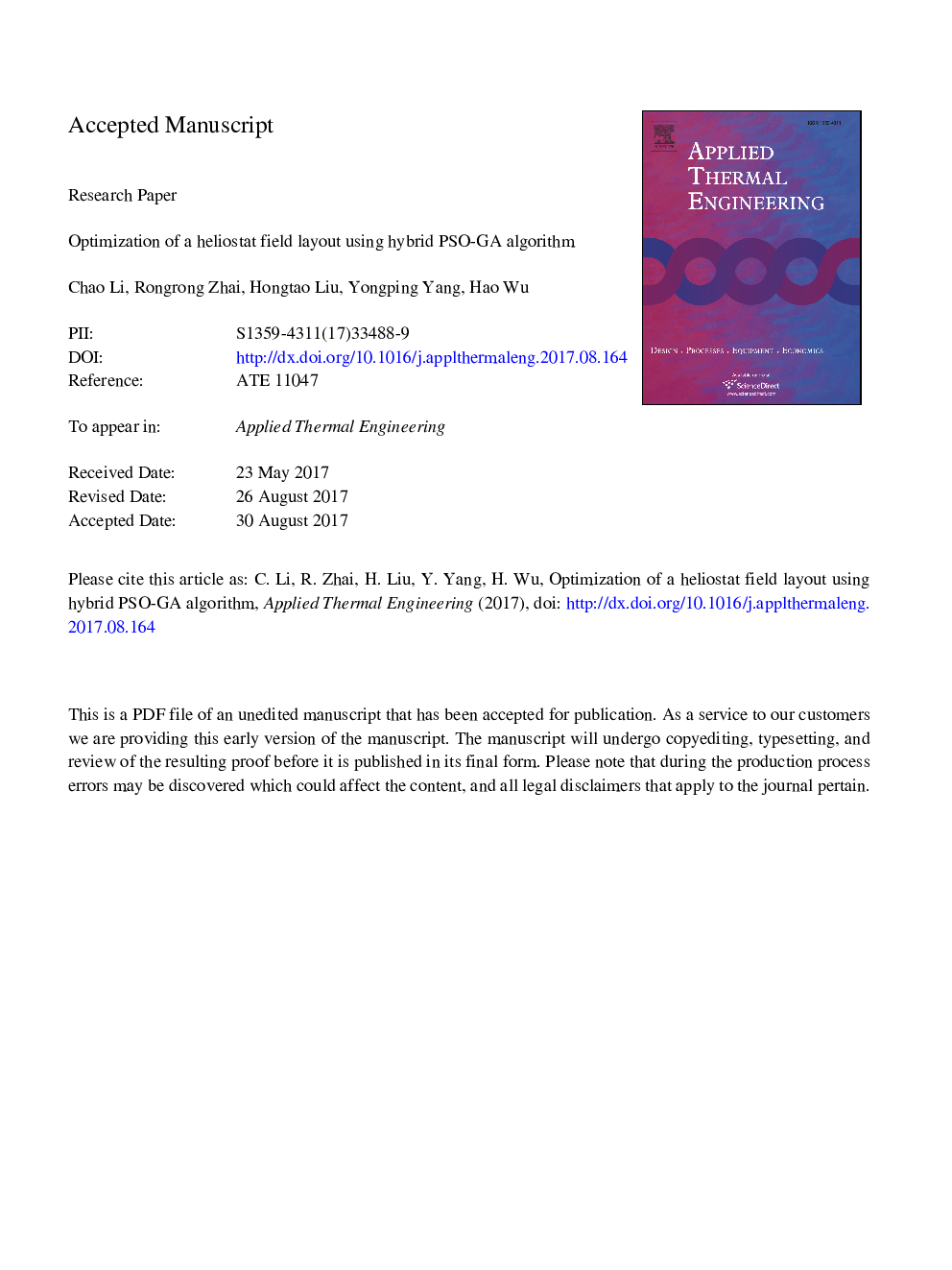| Article ID | Journal | Published Year | Pages | File Type |
|---|---|---|---|---|
| 4990796 | Applied Thermal Engineering | 2018 | 32 Pages |
Abstract
A mathematical model of the heliostat field and the PSO-GA algorithm are developed in Matlab to optimize a heliostat field and determine the highest potential daily energy collection (DEC). The heliostat field in Lhasa, China is analyzed as an example. The energy collected per unit cost (ECUC) is then calculated to evaluate the economic performance of the heliostat field. Furthermore, the effects of several important factors on the heliostat field are also explored. Results indicate that, after optimization, the DEC during the spring equinox, summer solstice, autumnal equinox, and winter solstice increase by approximately 1.1 Ã 105, 1.8 Ã 105, 1.2 Ã 105, and 0.9 Ã 105 MJ, respectively. Studies on the key parameters show that as the number of heliostats in the first row of the field (Nhel1) increases, the ECUC first increases to its maximum value and then decreases. Additionally, ECUC increases with tower height but decreases as the cost of the heliostat mirror collector increases.
Related Topics
Physical Sciences and Engineering
Chemical Engineering
Fluid Flow and Transfer Processes
Authors
Chao Li, Rongrong Zhai, Hongtao Liu, Yongping Yang, Hao Wu,
